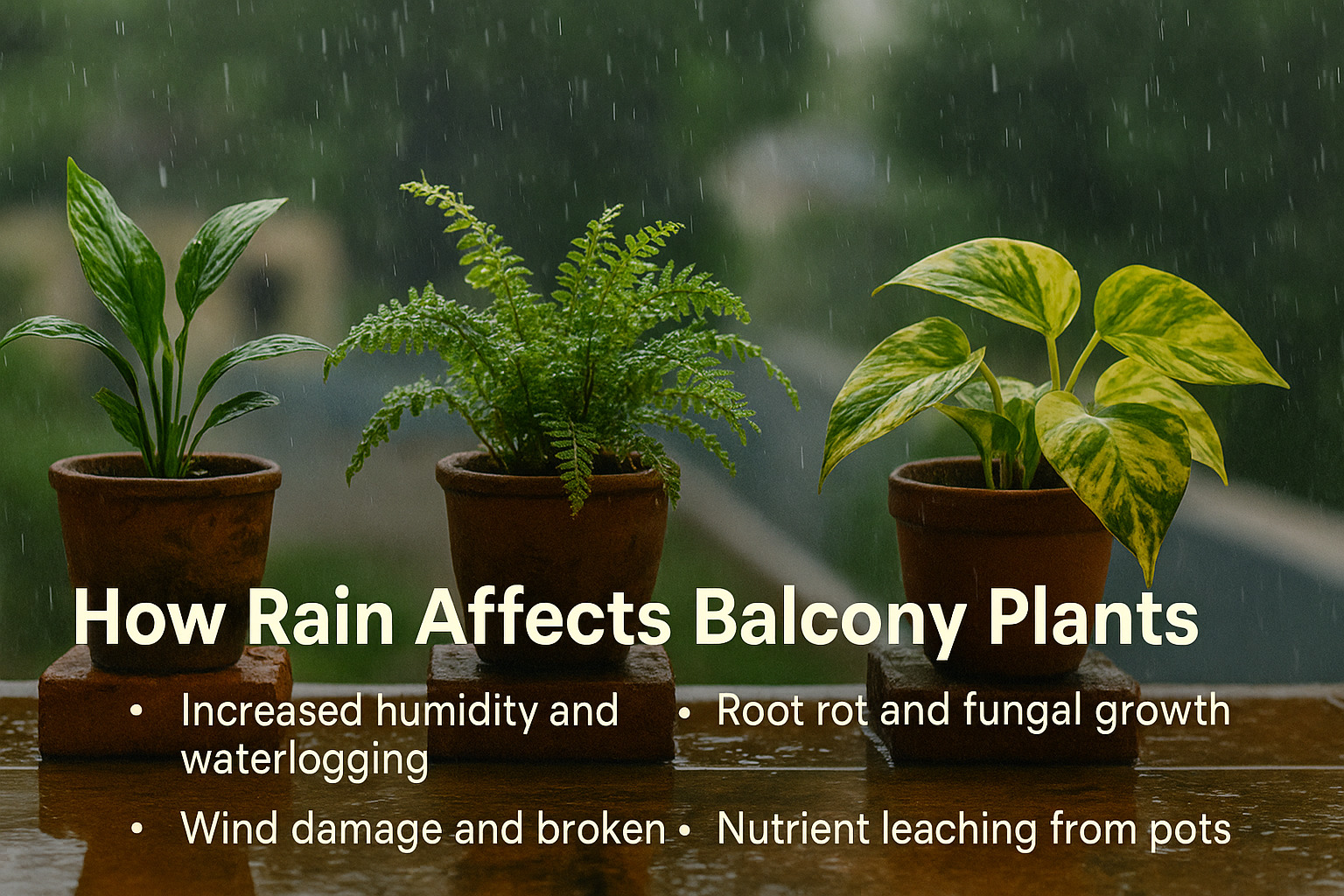.jpg)
Monsoon in India, running from June to September, rejuvenates the landscape but also presents unique challenges for balcony gardeners.
With increased humidity, frequent rain showers, and windy conditions, proper care becomes essential for healthy, flourishing balcony plants.
Let's explore detailed care tips to ensure your plants not only survive but thrive throughout the monsoon season.
Why Balcony Plants Need Extra Care in Monsoon
Heavy rains can cause waterlogging, root rot, pest infestations, and fungal growth. Balcony plants are especially vulnerable due to limited drainage and exposure to wind and rain.
How Rain Affects Balcony Plants
Rain can bring excessive water, leading to root rot, fungal issues, nutrient loss, and wind-related damage.
Awareness of these effects helps you implement protective measures early.
1. Prevent Overwatering – Let It Drain, Don’t Strain!
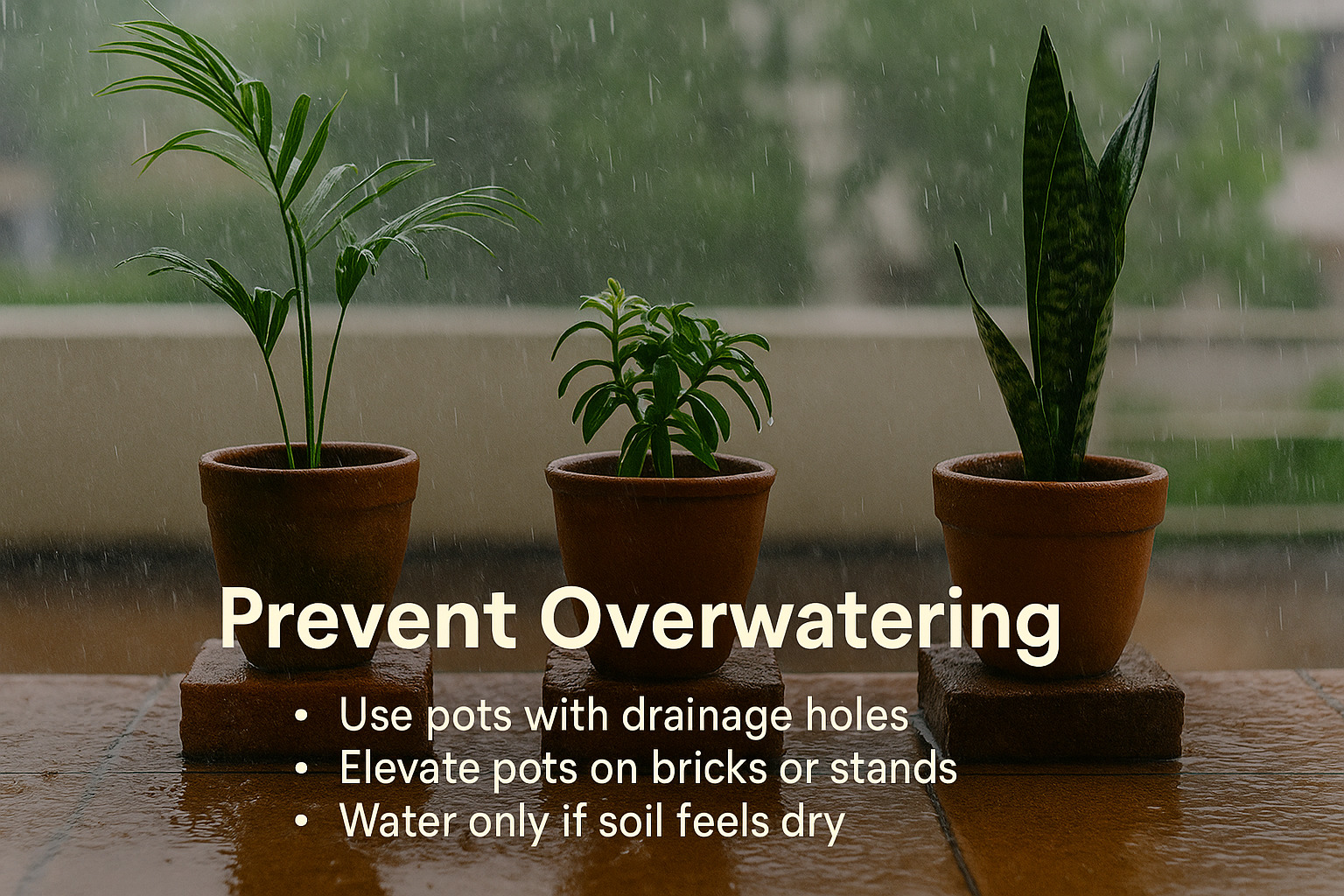
Proper drainage is crucial in the monsoon. Check your pots regularly for clear drainage holes.
Using raised plant stands helps excess water escape, reducing the risk of root rot.
Symptoms of overwatering include yellowing leaves, mushy stems, and a foul odor.
Tip: Explore drainage-friendly pots from Urban Plant’s Pots Planters Collection.
2. Combat Fungal Issues the Smart Way
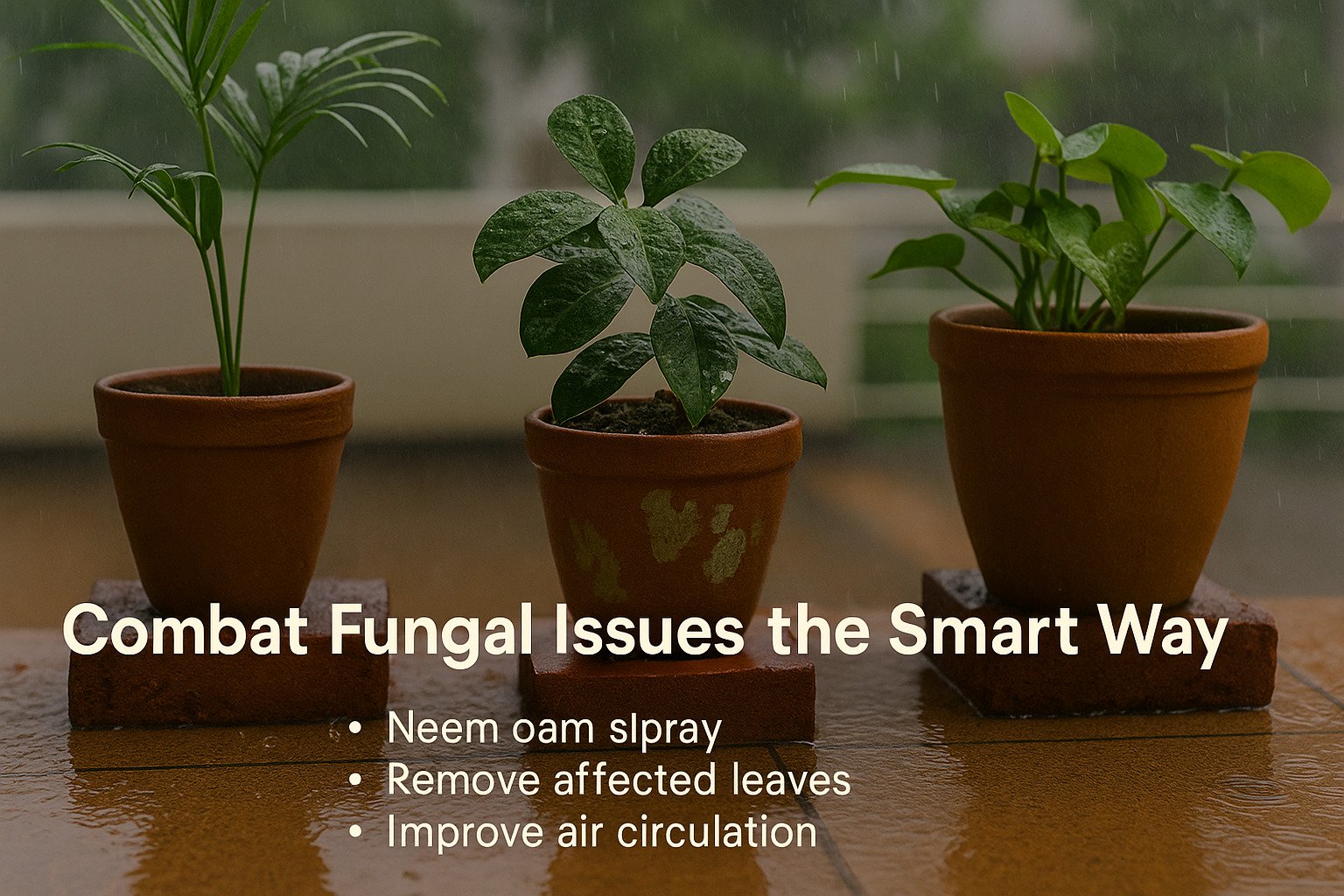
High humidity and moisture encourage fungi like powdery mildew and root rot.
Regularly spray natural antifungal solutions like neem oil or cinnamon-infused water.
Keep adequate spacing between pots for better air circulation.
3. Wind Protection Is Not Optional
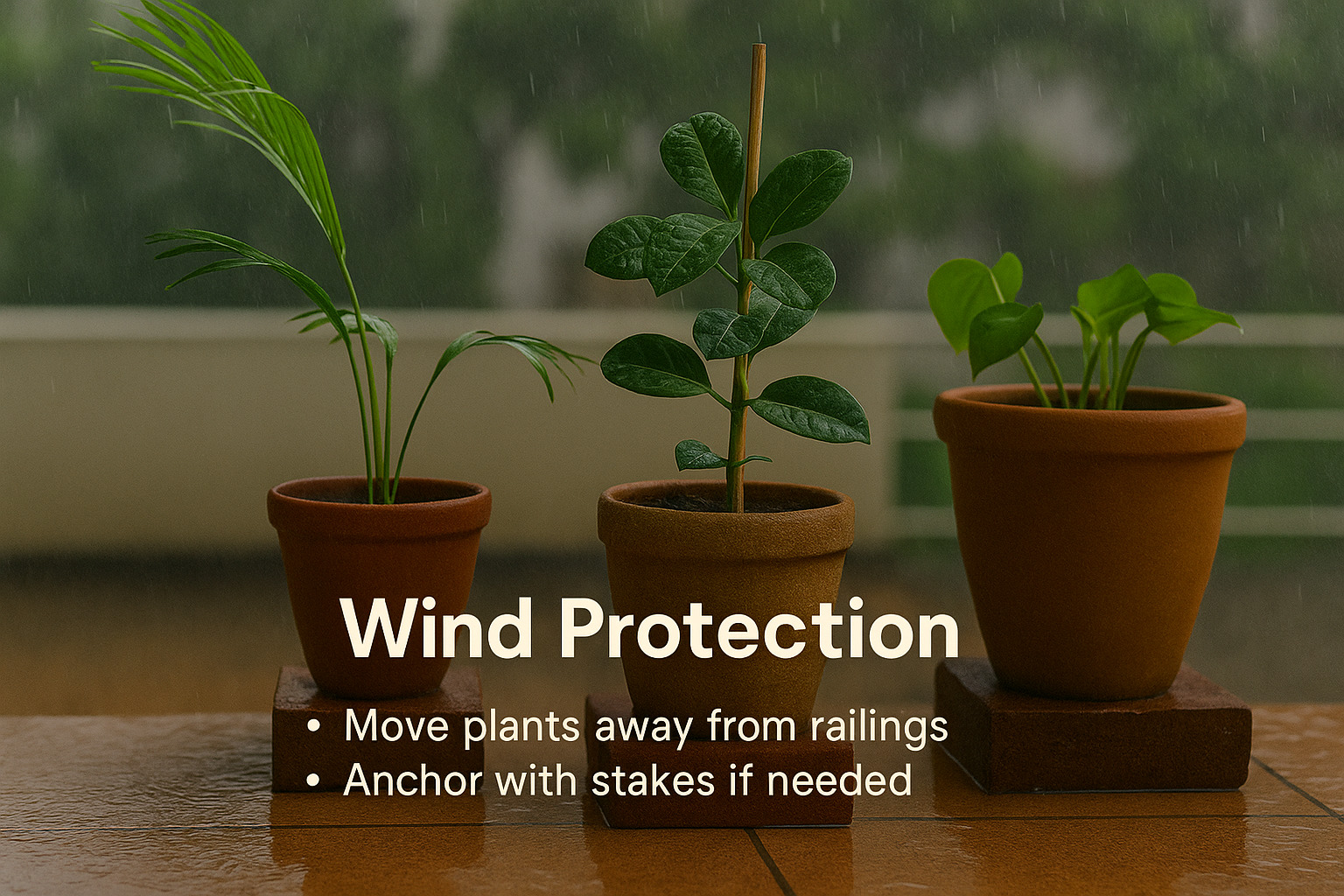
Heavy winds during monsoons can damage plants. Consider installing barriers like jute mats or bamboo screens.
Grouping plants closely can also provide mutual support against strong gusts.
4. Staking & Supporting Your Green Buddie
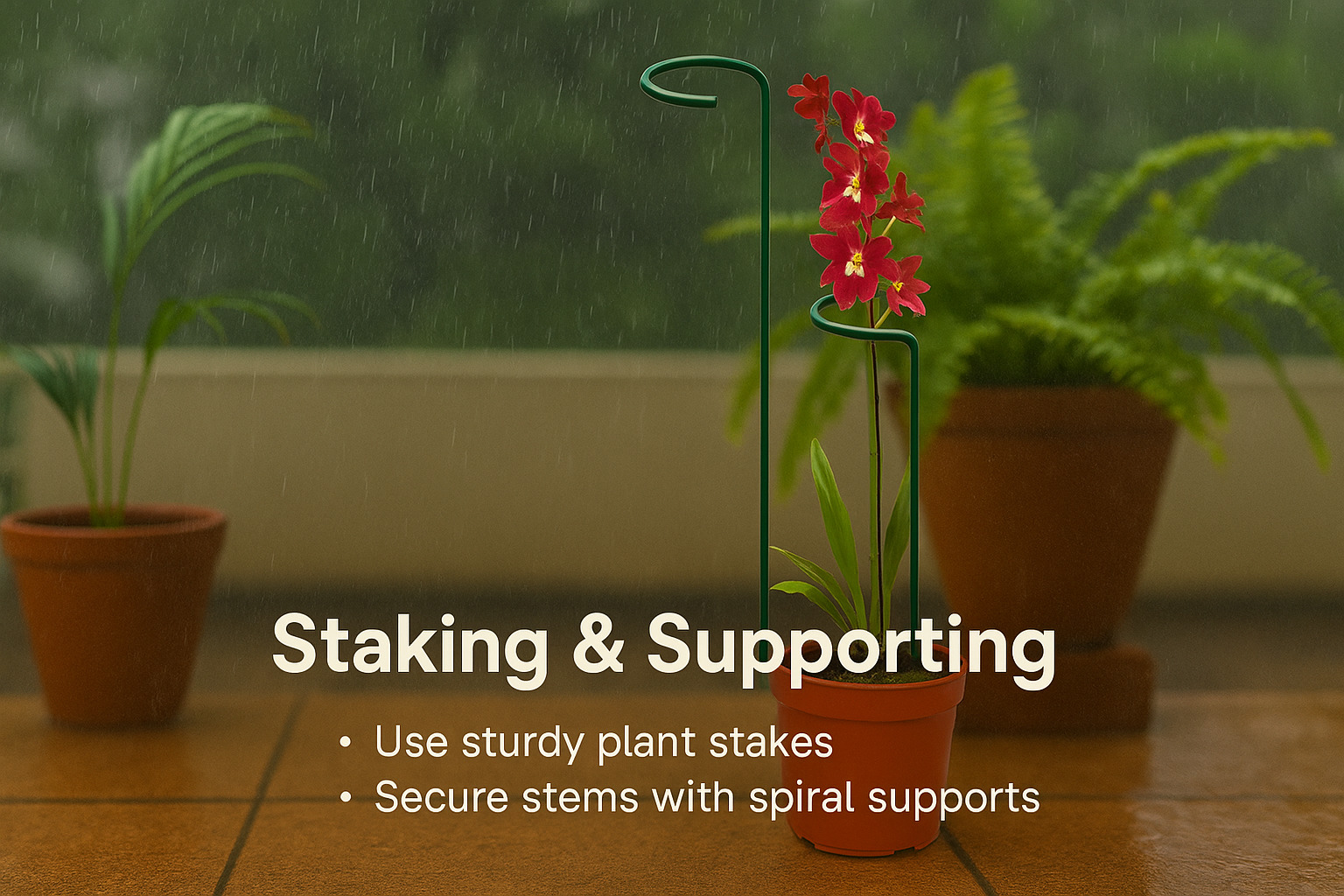
Tall plants like tomatoes, hibiscus, or money plants may need staking.
Use bamboo stakes and secure stems gently with coir ropes or soft cloth strips.
Proper support prevents stem breakage and promotes healthier growth.
Tip: Check out Urban Plant’s Tools & Accessories.
5. Choose the Right Monsoon-Friendly Balcony Plants
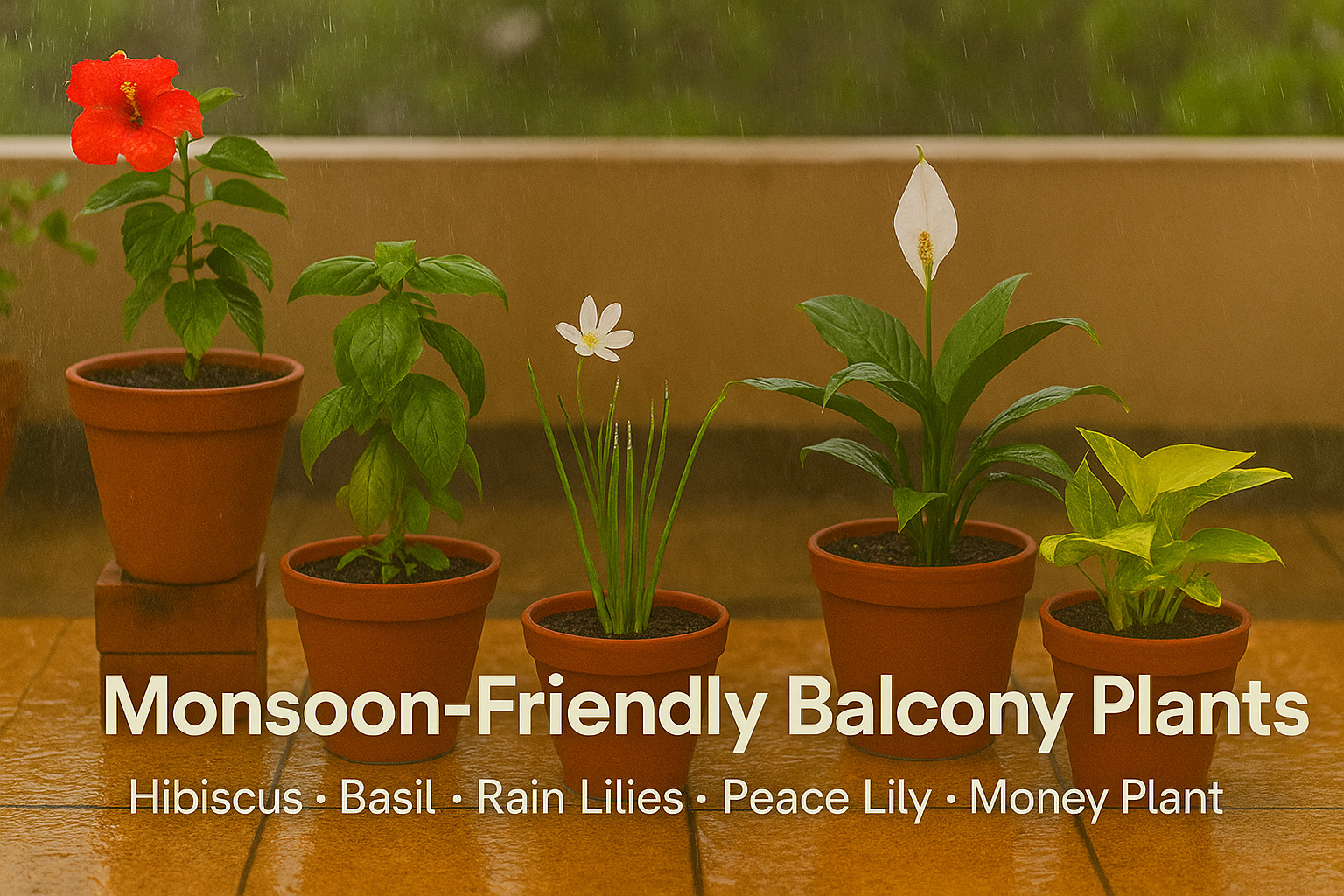
Selecting suitable plants simplifies monsoon care.
Ideal monsoon-friendly plants include areca palm, snake plant, peace lily, and ferns. Avoid water-sensitive plants like succulents and cacti.
Tip: Browse Urban Plant’s Amazing Plants Collection.
6. Smart Watering Schedule During Rainy Days
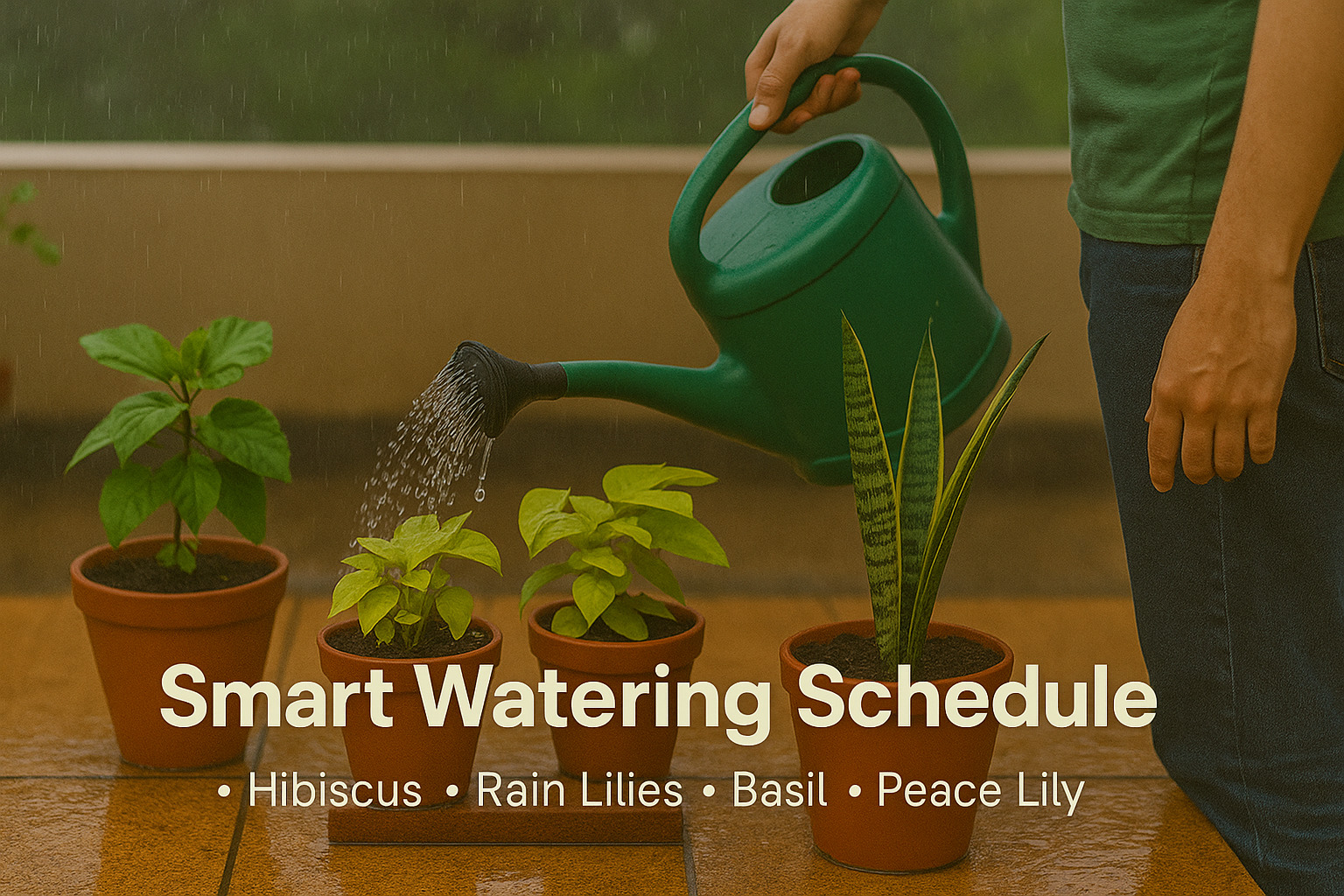
Adjust your watering schedule by checking soil moisture regularly. Avoid watering plants that have received adequate rainfall.
Watering in the morning helps plants dry out, minimizing fungal growth.
7. Soil Mix & Potting Tips for Rainy Season
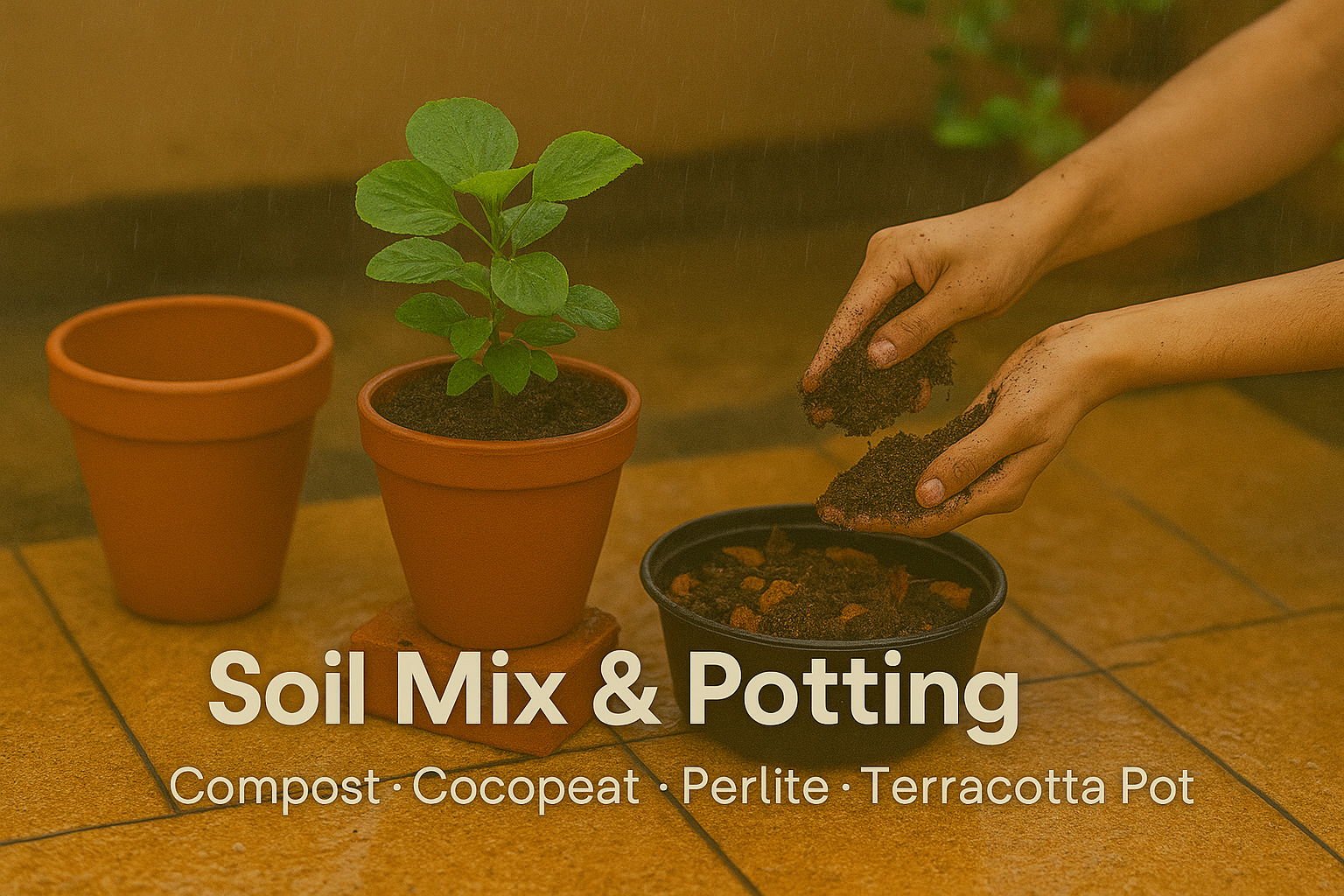
Use well-draining soil mixes combining cocopeat, compost, and perlite. Avoid clayey soils that retain excessive moisture.
Applying mulch like neem leaves or rice husks helps reduce soil splash and fungal contamination.
8. Keep an Eye on Pests & Insects
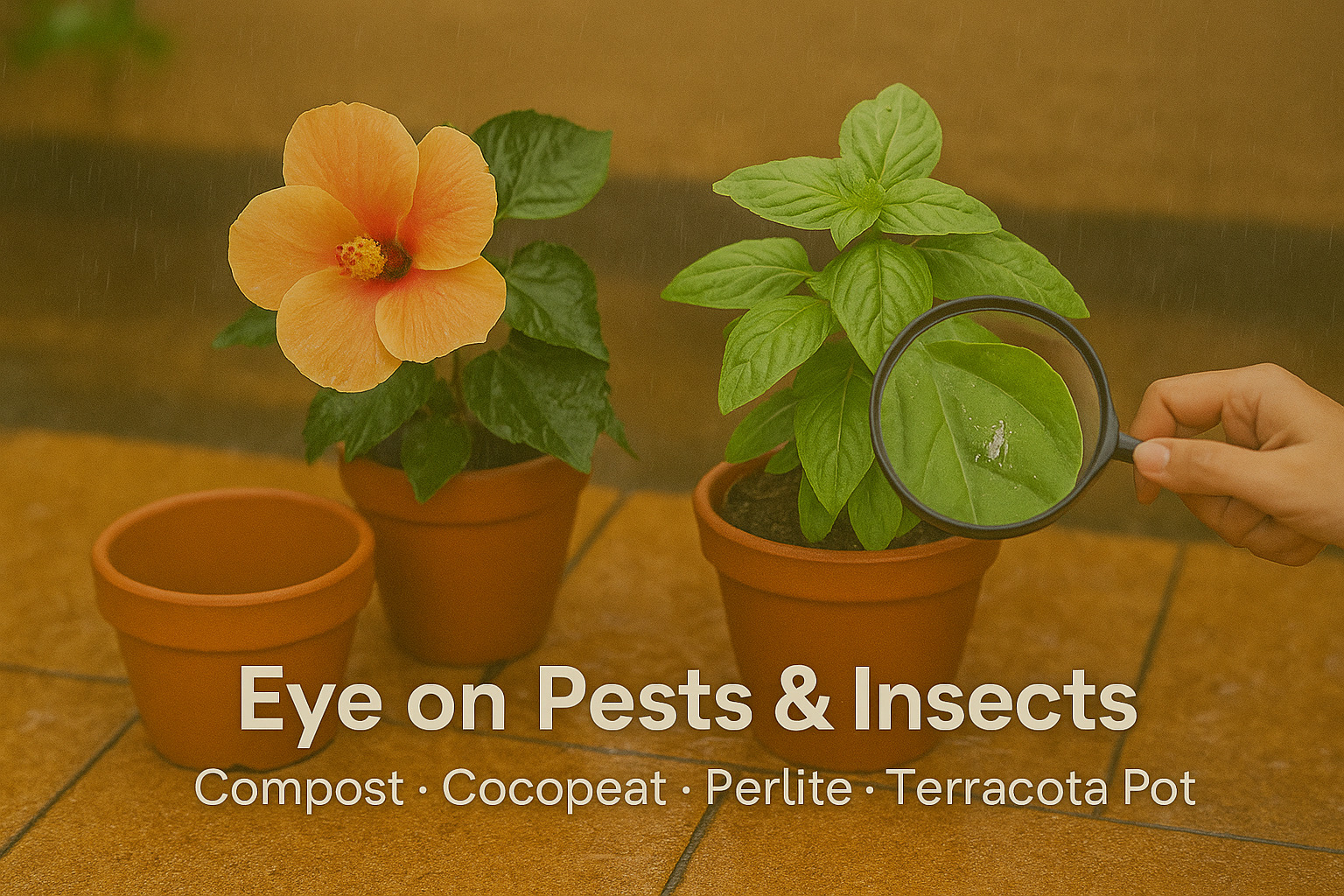
Monsoon attracts pests such as snails, slugs, and mealybugs.
Apply organic repellents like neem sprays and maintain hygiene by removing infected foliage promptly.
9. Regular Pruning & Cleaning
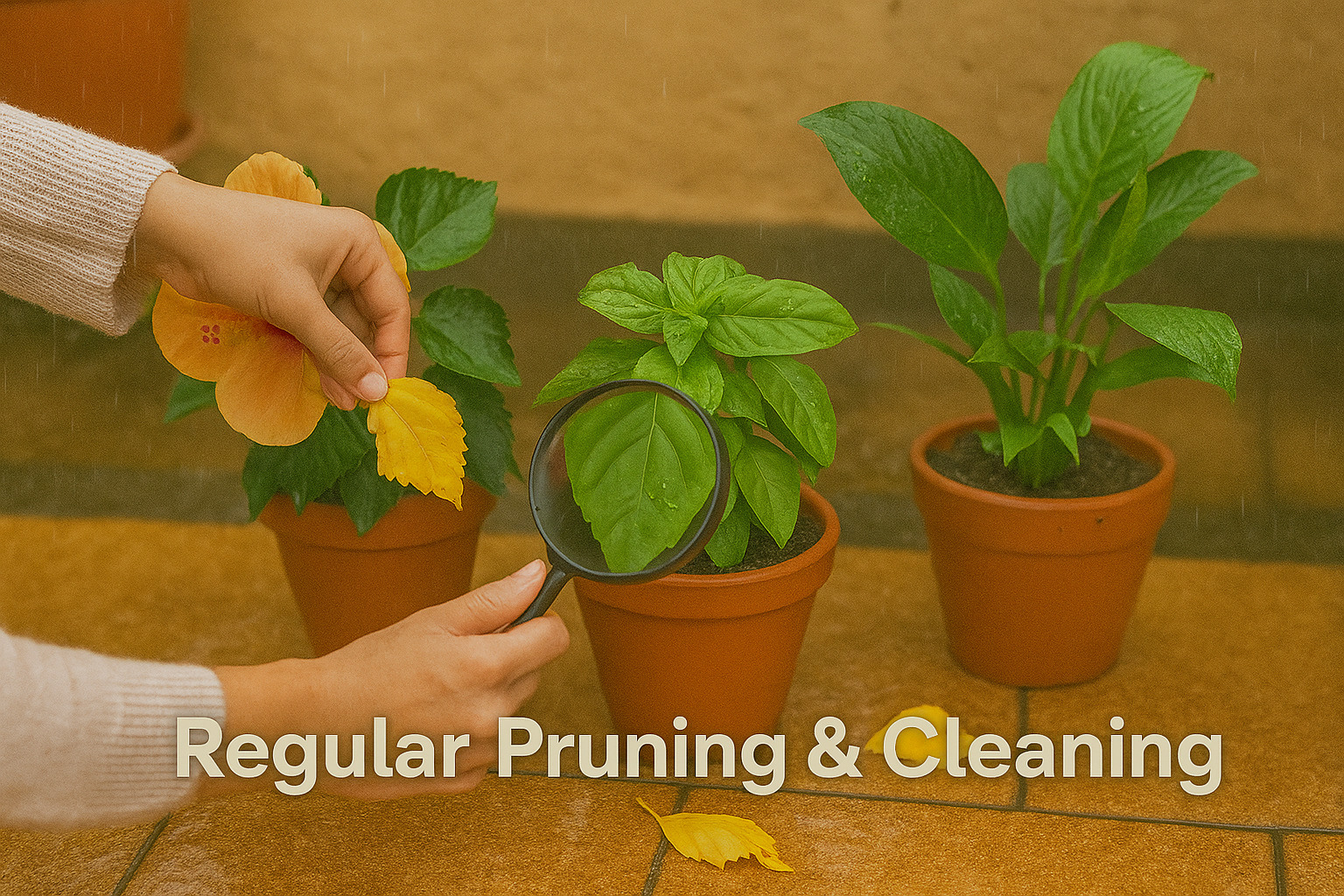
Regular pruning helps eliminate dead leaves and infected stems, improving airflow and reducing disease spread.
Avoid pruning during heavy rains to prevent further stress.
10. Elevate or Relocate Your Pots
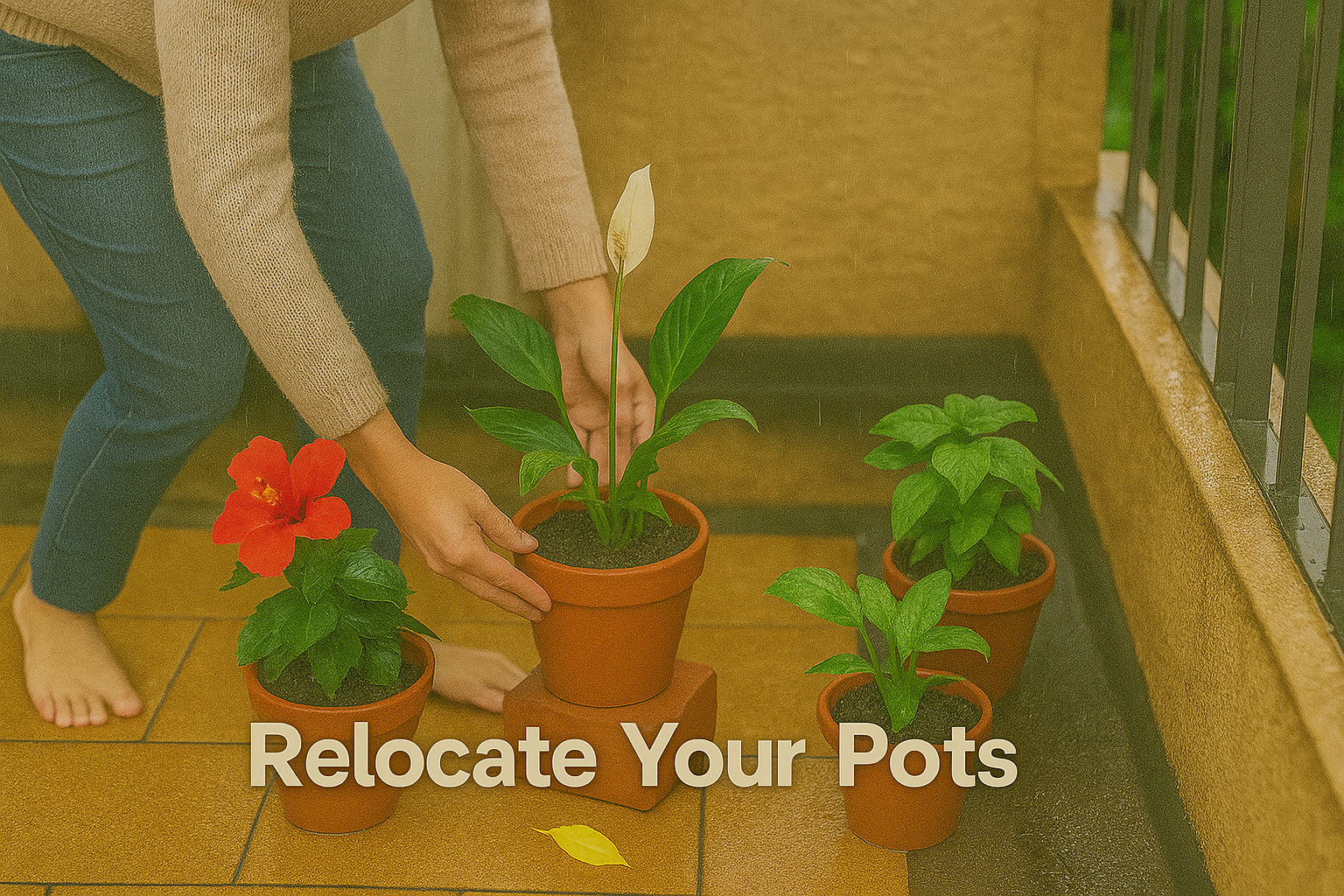
Use plant stands or relocate pots to semi-covered areas to avoid direct rain splashes.
This helps protect sensitive plants from excessive moisture and wind damage.
11. Fertilizing: Less Is More in Monsoon
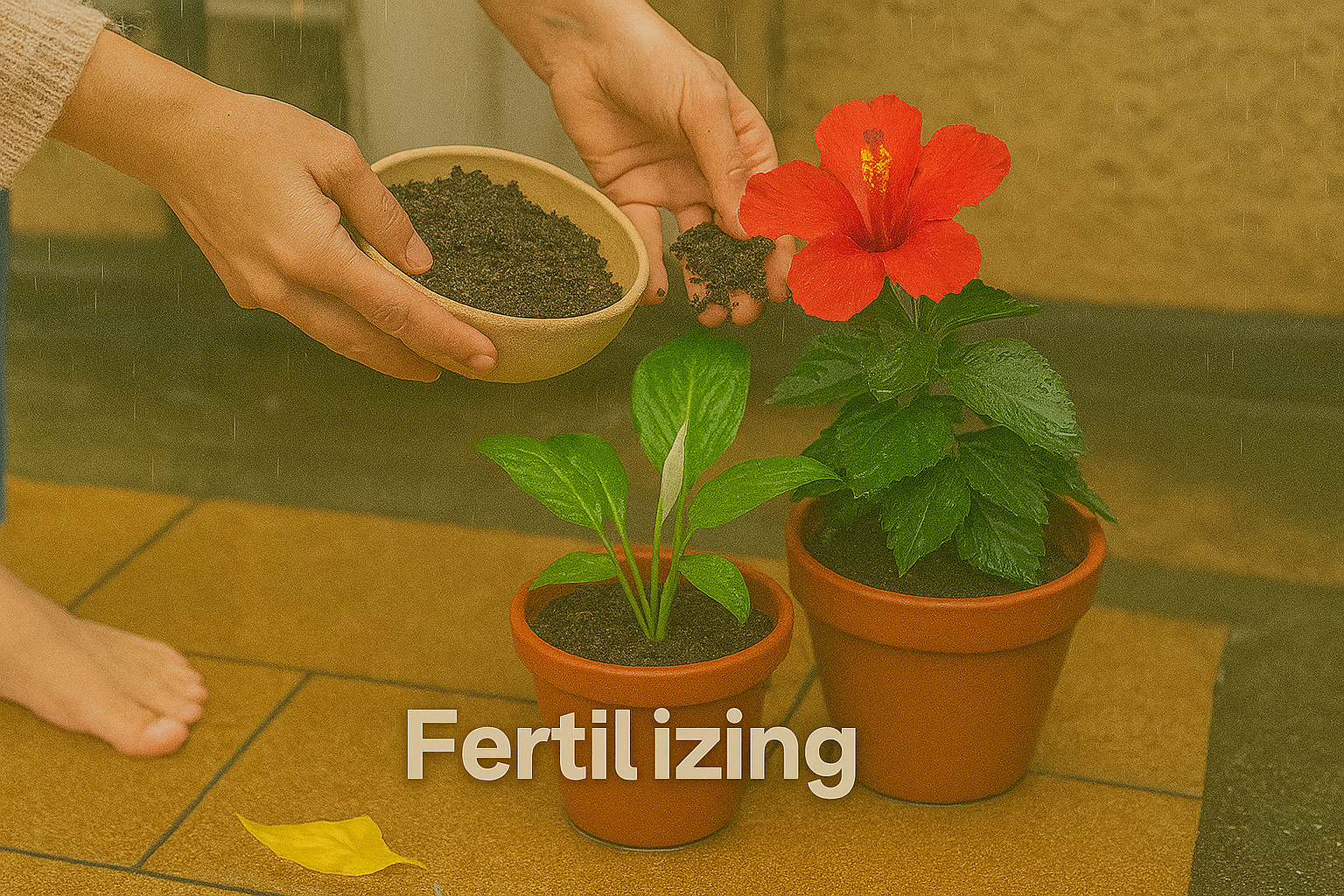
Reduce fertilizer use during monsoon as nutrients quickly leach from pots due to heavy rainfall.
Opt for slow-release organic compost to provide nutrients gradually without overwhelming plants.
12. Clean Your Balcony Weekly
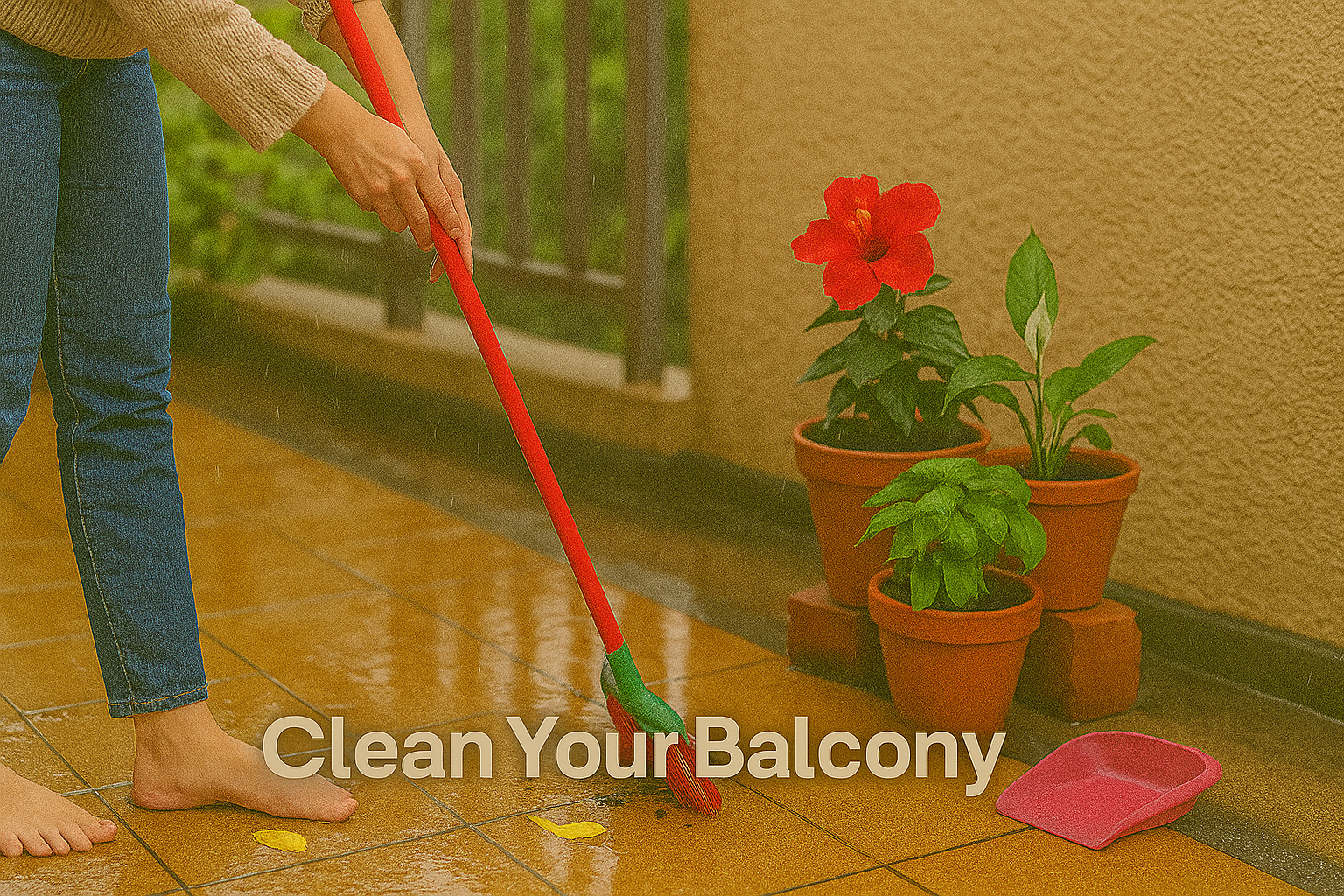
Regular cleaning prevents slippery algae growth and ensures drainage holes remain unclogged.
Weekly maintenance ensures a safe, healthy environment for your plants and your family.
Pro Hack: Observe & Adjust
Each balcony has a unique microclimate. Regularly observe your plants’ responses to rainfall and humidity.
Adjust care routines accordingly, and seek community support through gardening groups or forums for additional insights.
Seasonal Balcony Gardening Calendar (June–September)
| Month | Key Focus | To-Do Task Suggestions |
|---|---|---|
| June | Soil preparation, trimming | Mulching, raising pots, inspect drainage |
| July | Pest & fungus vigilance | Weekly neem oil spray, space out plants, add supports |
| August | Overwatering monitoring | Rearrange plant layout, light pruning, reduce watering |
| September | Resume feeding, cleanup | Compost addition, clean pots and balcony, prepare for winter season |
Expert Advice:
"Monsoon is great for plants if you manage water wisely. Watch the soil, and they’ll reward you with lush growth."
— Rhea Shah, Urban Gardening Specialist
Best Balcony Plants for Rainy Season in India
- Monstera – Loves humidity, indirect light
- Peace Lily – Thrives in moist soil
- Money Plant – Rain-resilient and decorative
- Areca Palm – Adds tropical vibes, tolerates rain
- Rain Lily – Blooms beautifully during monsoon
Read Also
How to Make a Vertical DIY Garden with Using Recycled Materials
Free Plant Gifting Campaign: Urban Plant’s Earth Day 2025 Celebration
FAQs Balcony Plants Care in Monsoon
How do I take care of balcony plants during the monsoon?
To care for balcony plants in the monsoon, ensure good drainage, avoid overwatering, space plants for better airflow, and use neem oil spray to prevent fungal infections. Raise pots on stands and avoid placing water-sensitive plants directly under heavy rain.
What are the best care tips for plants in monsoon weather?
The best care tips include reducing watering frequency, improving soil drainage, using organic compost, pruning dead leaves, and shielding plants from wind or heavy showers. Regular cleaning and pest checks are also essential during the rainy season.
Which plants are best for balcony gardening during the rainy season?
Rain-friendly plants for balconies include rain lilies, hibiscus, peace lily, ferns, money plant, jasmine, and mint. Avoid succulents and cacti outdoors during the monsoon as they are prone to rot from excess moisture.
How often should I water potted plants during monsoon?
Water balcony plants only when the top 1–2 inches of soil feels dry. Monsoon rains usually provide sufficient moisture, and overwatering can lead to root rot.
What kind of soil is best for growing plants in pots during the rainy season?
Use a light, well-draining mix with cocopeat, compost, and perlite. Avoid heavy clay soils. A top layer of organic mulch helps prevent soil splash and retains nutrients.
How can I prevent fungal infections in balcony plants during monsoon?
Use natural antifungals like neem oil or cinnamon powder, maintain good air circulation, avoid water stagnation, and prune infected parts promptly. Keep pots clean and spaced apart.
Can I fertilize my plants during the rainy season?
Yes, but use organic compost or vermicompost in moderation. Avoid chemical fertilizers during heavy rains as they may leach away or damage roots.
How do I protect balcony plants from heavy rain?
Move them to covered corners, use well-drained pots, and avoid overwatering.
What causes fungus in balcony plants during monsoon?
Excess water retention and poor airflow encourage fungal growth. Keep leaves dry and prune regularly.
How often should I water balcony plants in monsoon?
Only water when the topsoil feels dry — the rain usually provides sufficient moisture.
Conclusion: Keep Your Balcony Blooming All Monsoon Long
By following these detailed tips, your balcony garden can thrive beautifully throughout the monsoon.
Consistent care and observation ensure vibrant, healthy plants, transforming your rainy-season gardening experience.
Happy gardening this monsoon!

